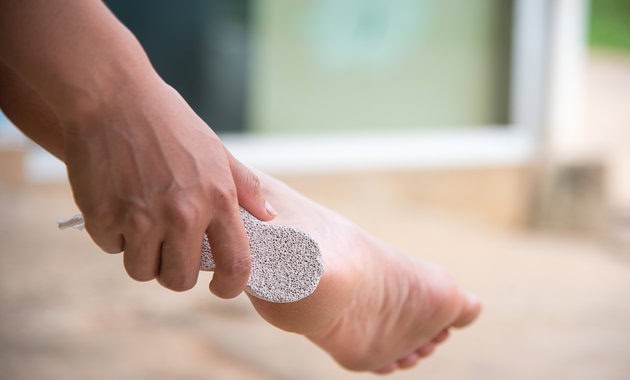People with diabetes are at an increased risk of foot complications. Minor issues can lead to serious complications in diabetes be it a tiny corn in the foot or a small injury over a toe. This is because, over time, diabetes can cause damage to the nerves. This damage may also result in loss of sensation in the area. The risks of infections and reduced functioning also increase. Another complication of diabetes is hampered blood flow. Because of this, sores and cuts tend to take much longer to heal, especially in the peripheral parts of the body like the limbs. This could also increase one’s risk of having ulcers or gangrene (death of tissue due to insufficient supply of blood).
Here are some practical tips for you to fight foot complications that could arise due to diabetes:
1 . Keep your feet clean
Wash your feet with warm water mixed add a few drops of antiseptic solution. Make sure you do not add too much because that could lead to dry skin. You may also use a mild soap to do the same. After washing your feet, make sure you dry them well. Apply a hydrating foot cream. During summer months you can apply an anti-fungal powder in order to prevent any infections.
2 . Inspect your feet every day
Look out for any cuts, sores or areas where you do not experience any sensation. If you find that you have problems while moving your feet, you must consult your doctor. Check your feet daily at the end of the day for any blisters, rough patches of skin or ingrown toenails. Attend to these immediately.
3 . Remove dead skin build up from your feet
It is very important to make sure that your feet are not dry or have a build-up of hard skin. You may wash your feet every day but this alone will not get rid of the dead skin cells. To remove calluses, use a pumice stone or a non-abrasive foot scrub gently. Make sure you do not use any nail cutters to snip off torn skin as that can bring in infections. After scrubbing your feet, follow up with a lotion or hydrating foot cream.
4 . Trim your toenails regularly
Ingrown toenails can be very painful and you may have to go to the doctor to get them removed. They can also lead to bacterial infections and cause swelling. To avoid that, trim your nails regularly. Also, trim them straight across and do not dig into the corners as this could push your nails inside and increase the chances of getting an ingrown nail. If you notice any abnormal changes in your toes, like blisters, rashes or itching, consult your doctor.
5 . Invest in a good pair of shoes
Pick a decent pair of shoes that fits well and protects you from tripping and bruising. Breathing for your feet is as important as is for you. Orthotic footwear can be a good pick for those facing severity. Avoid plastic or vinyl based shoes.
6 . Keep your feet active
It is essential to keep the blood flowing to the very ends of your body. Indulge in light foot exercises like yoga or dancing. A simple practice of walking every day can also ensure good blood flow. Do not go out on footwear that is too tight or causes discomfort. This could obstruct blood flow.
